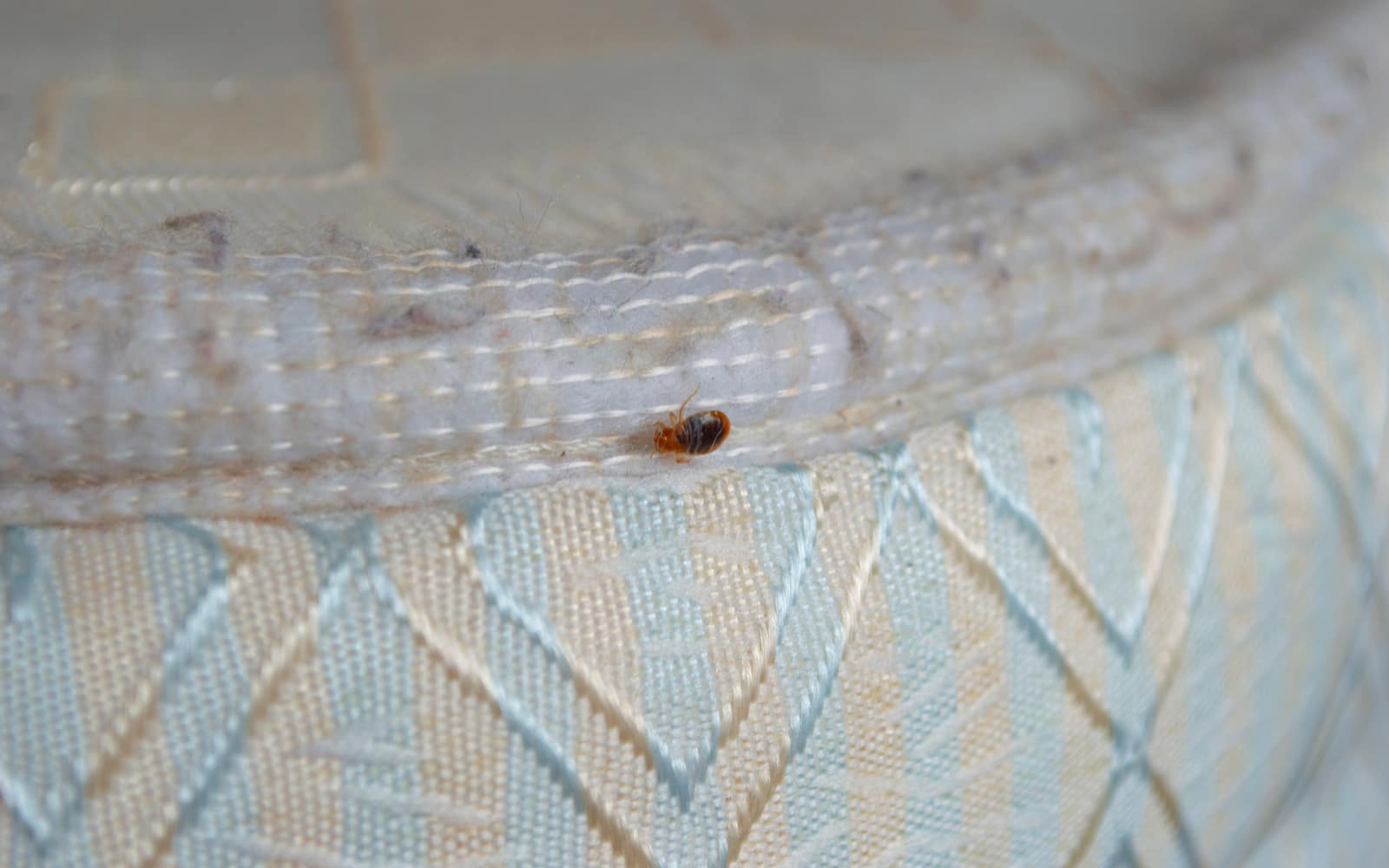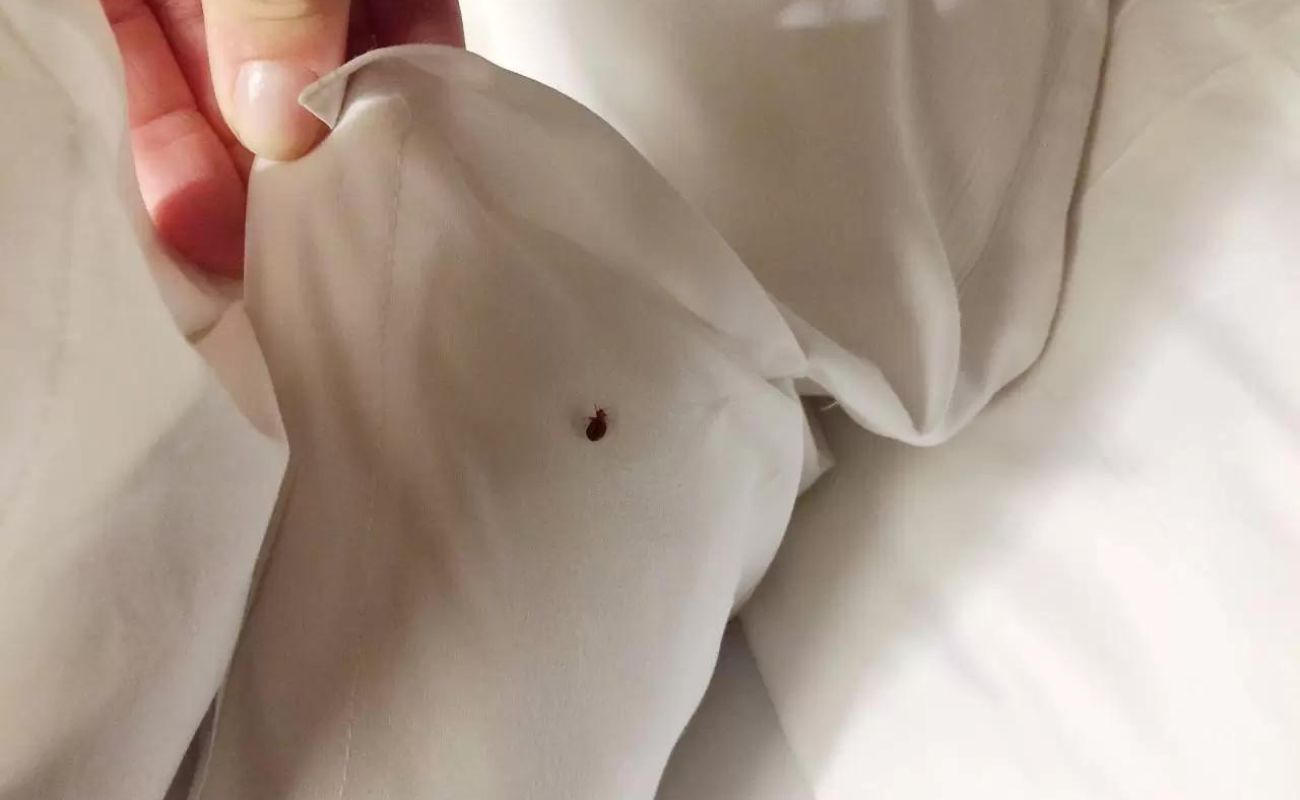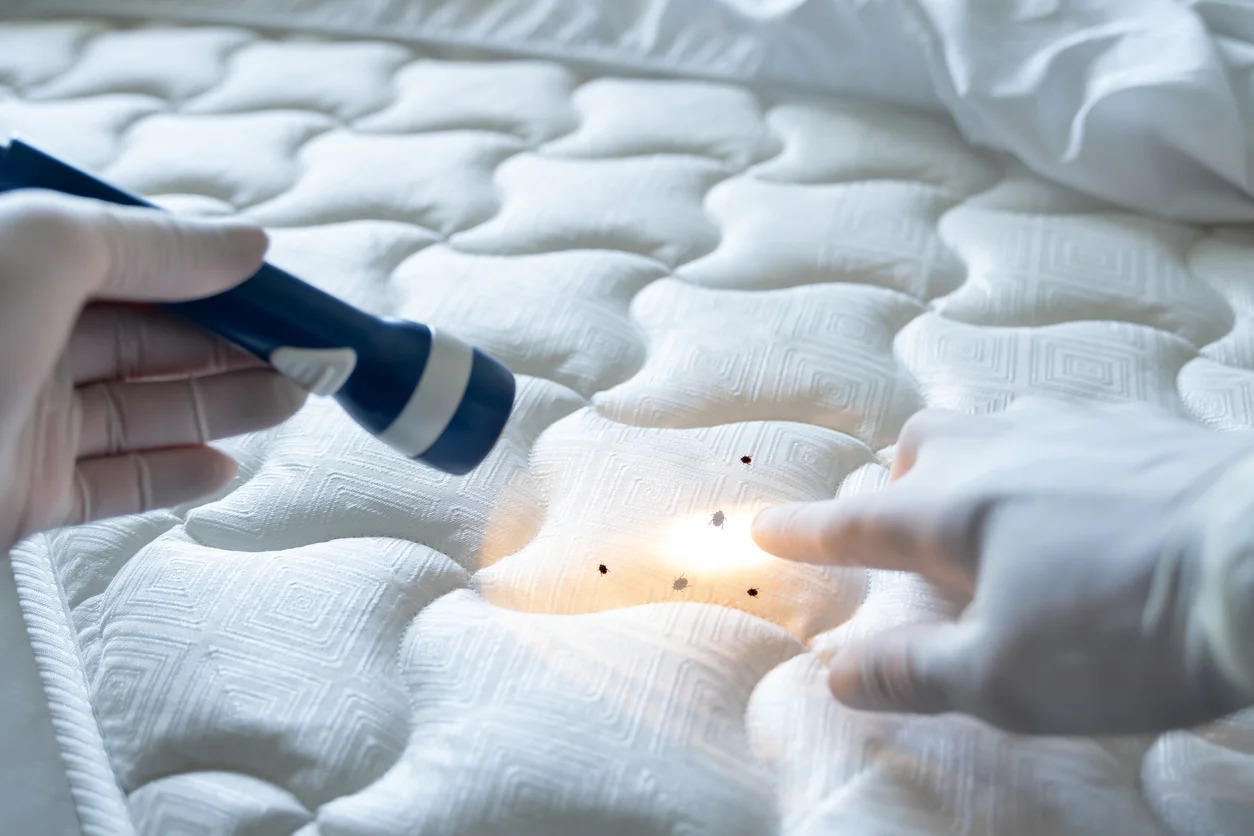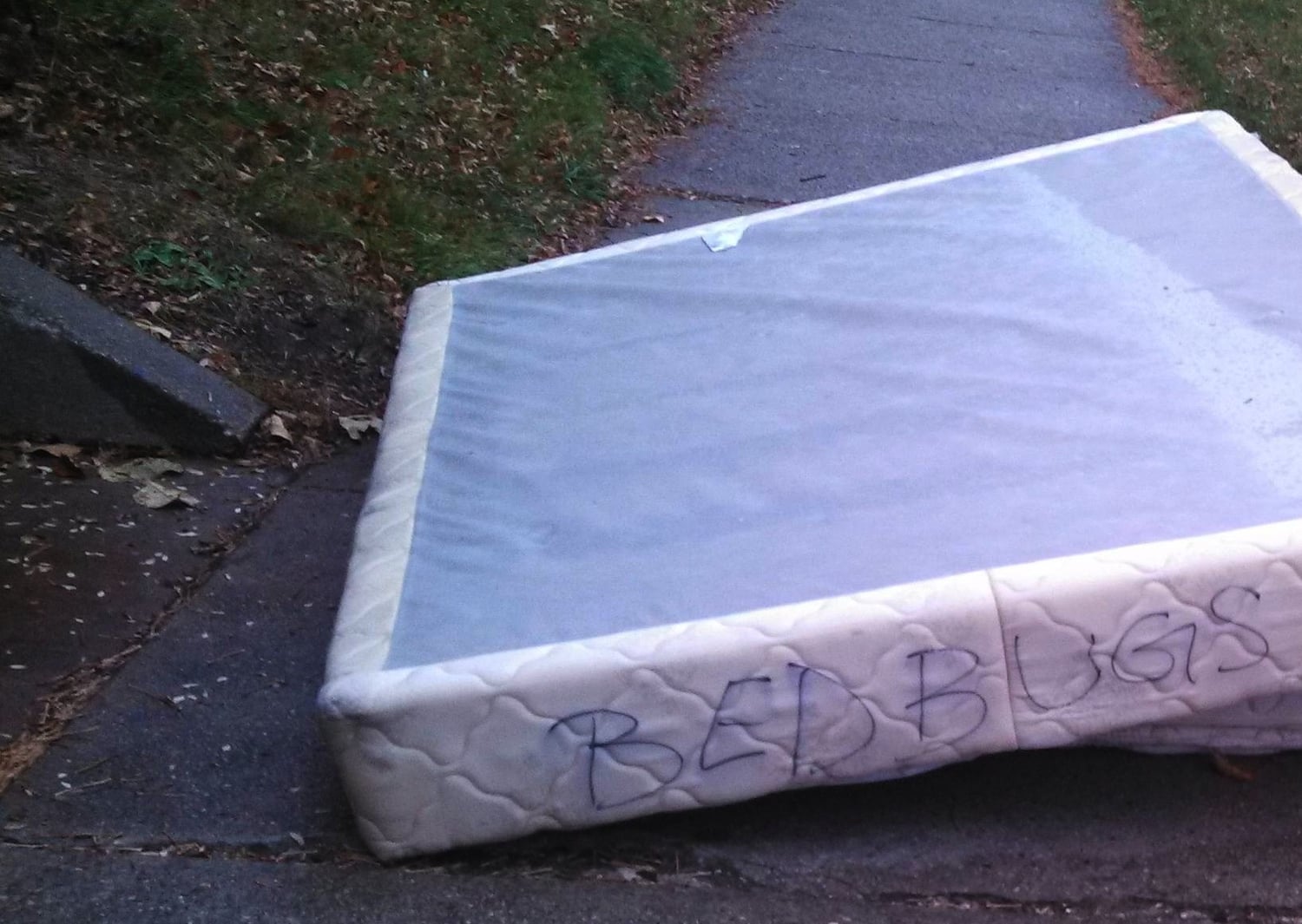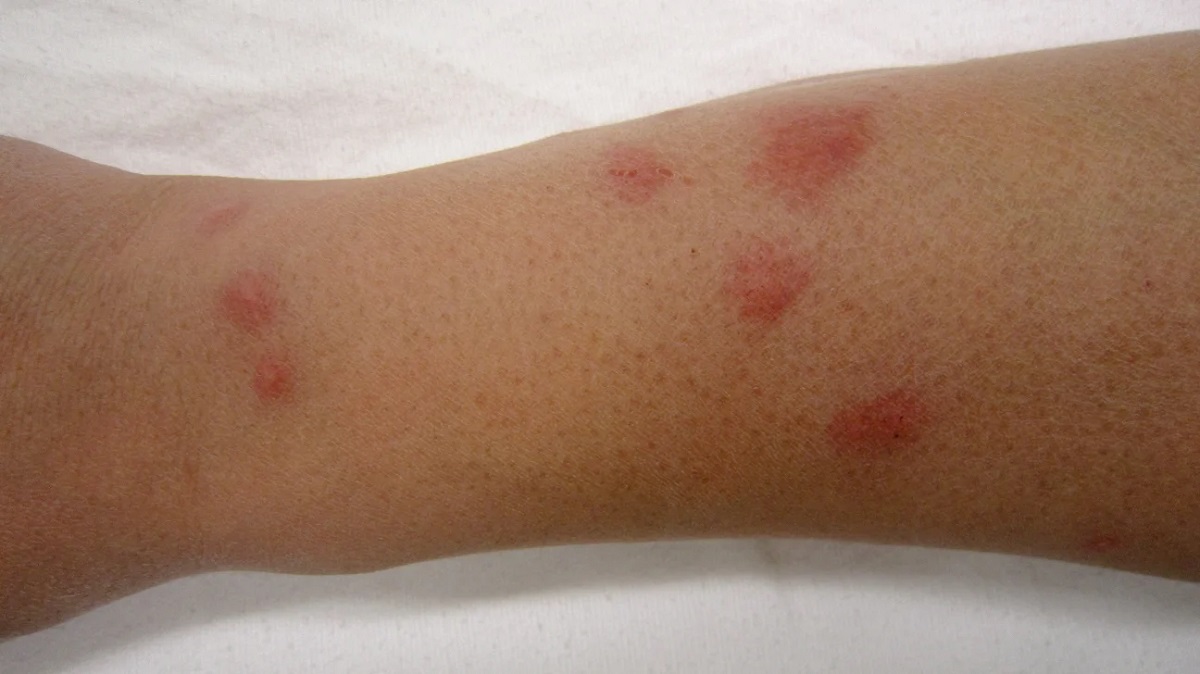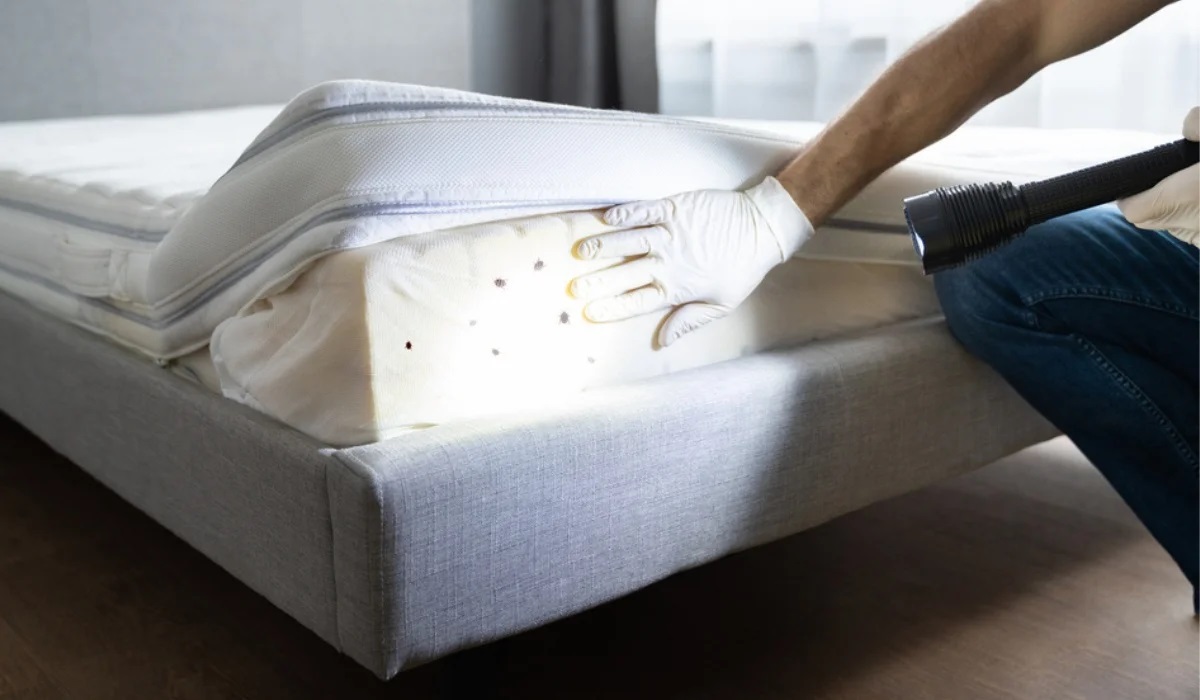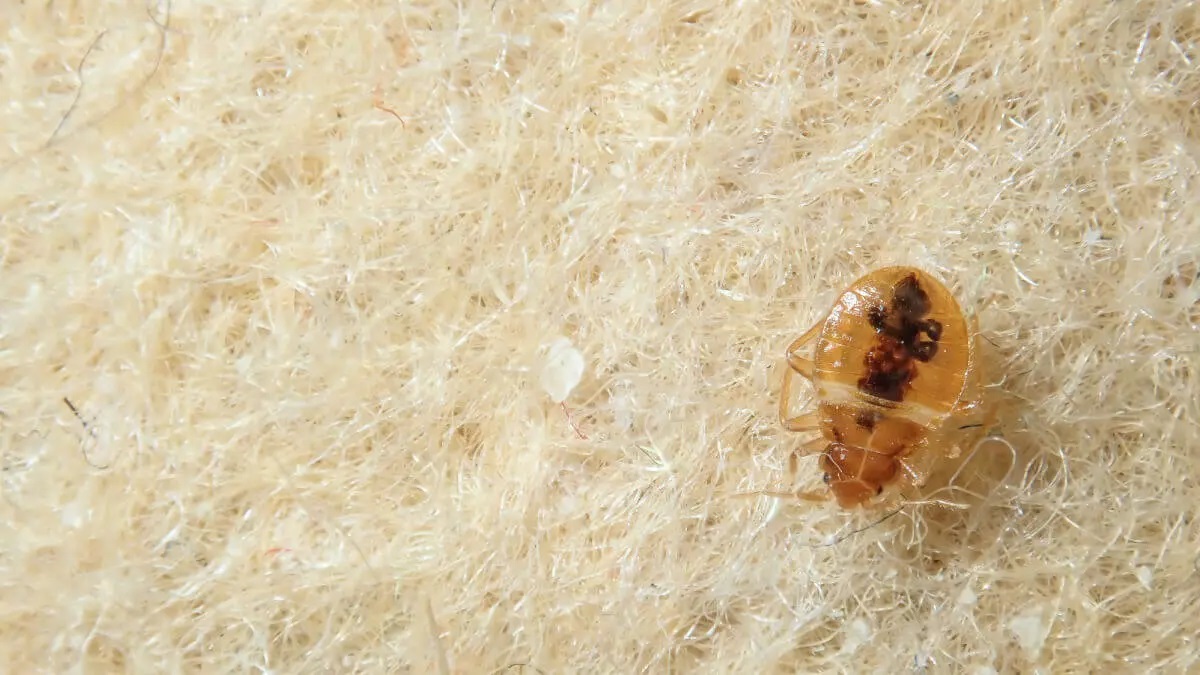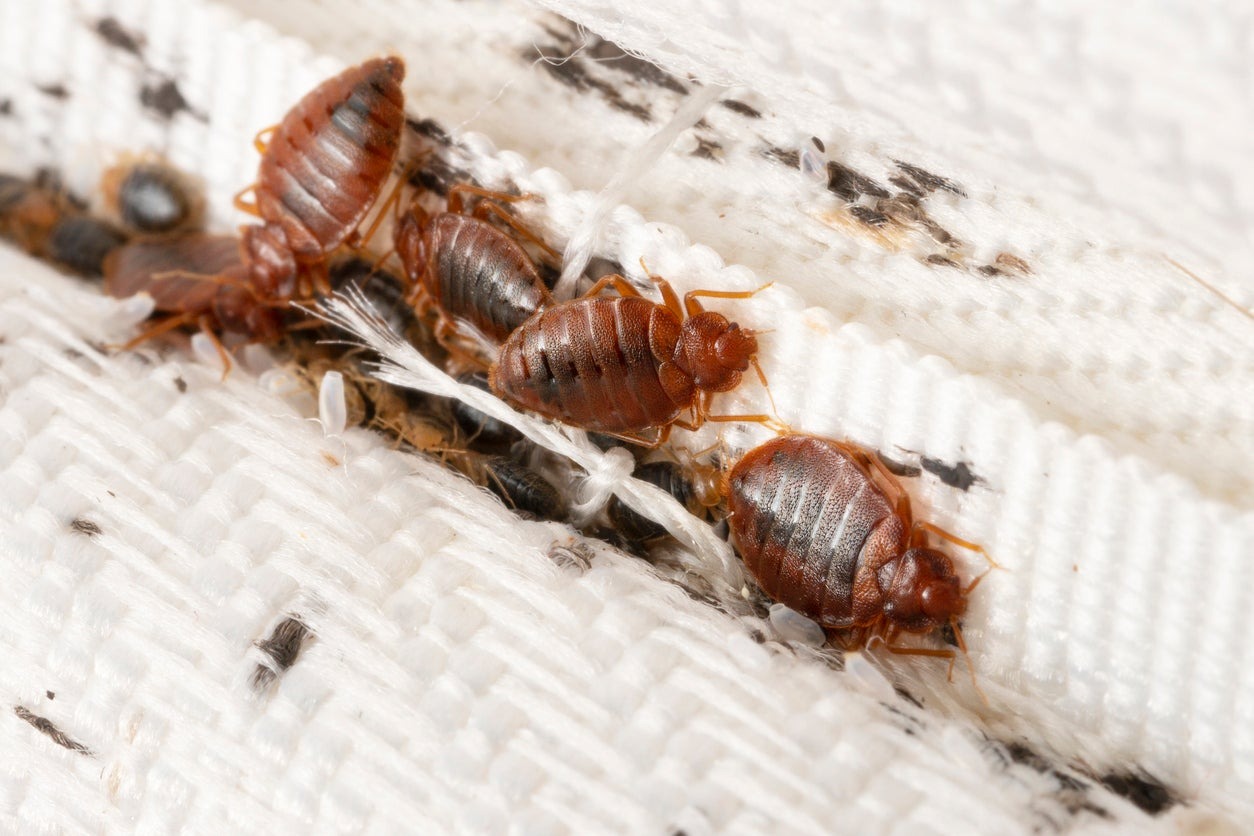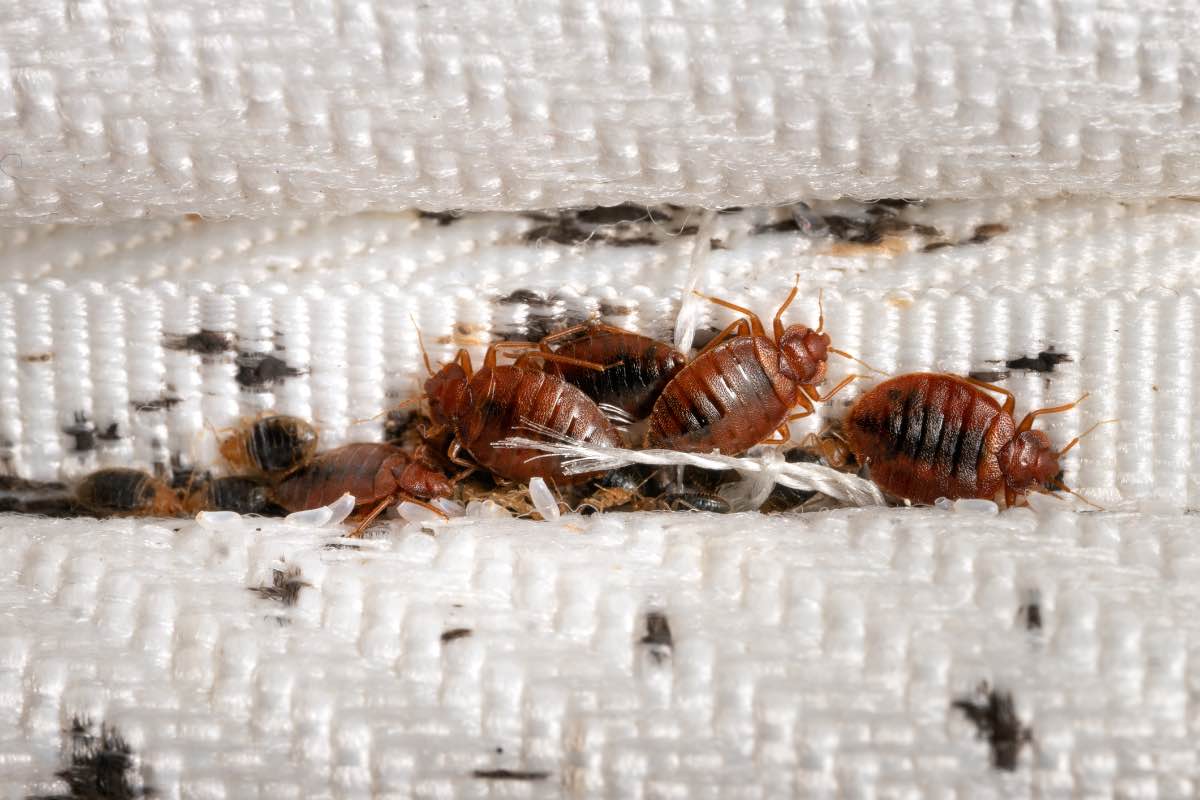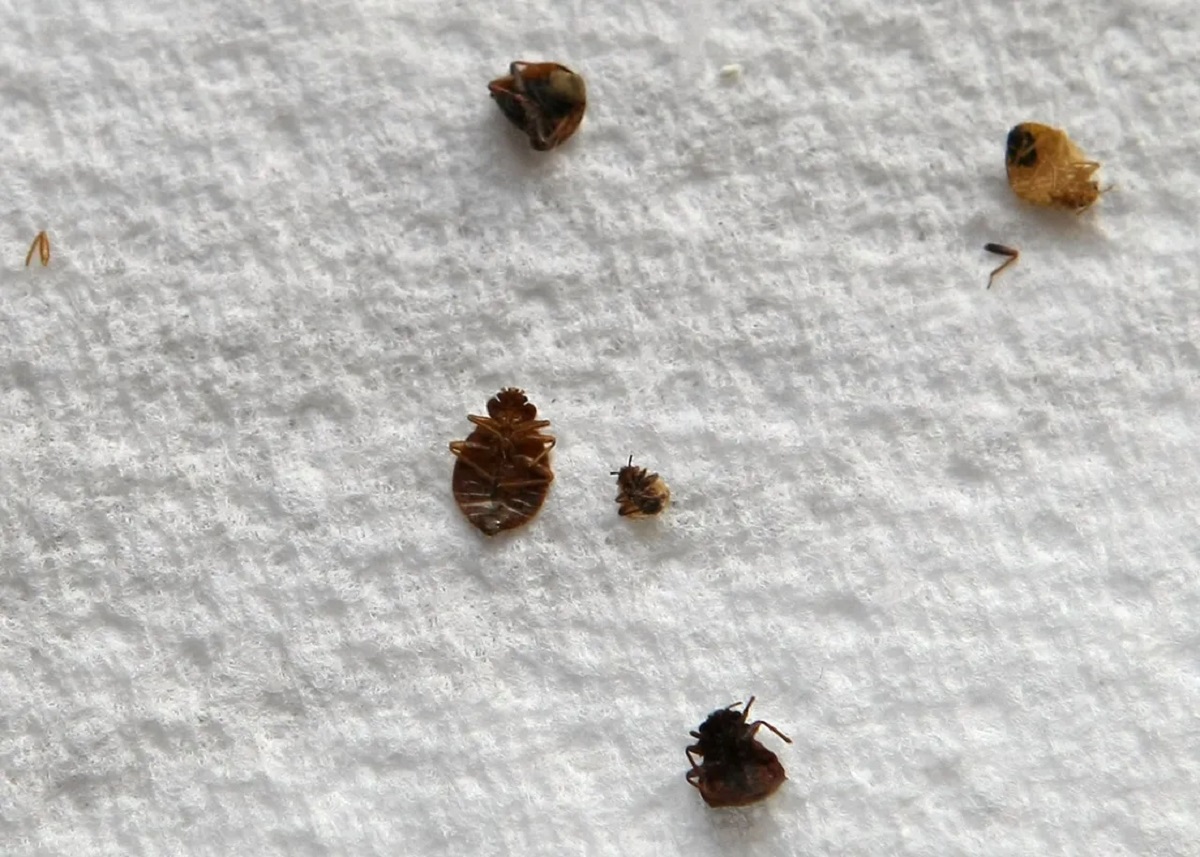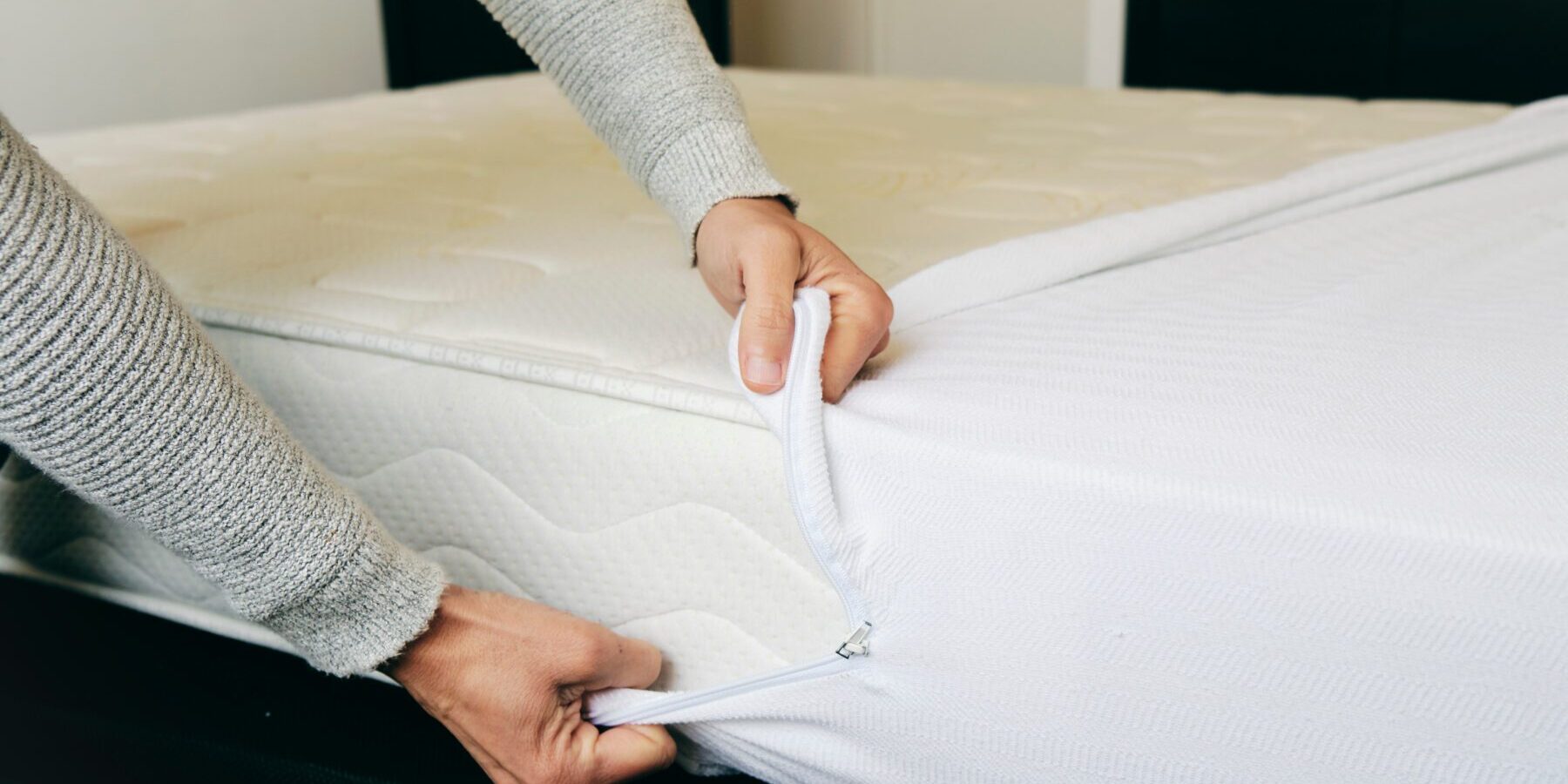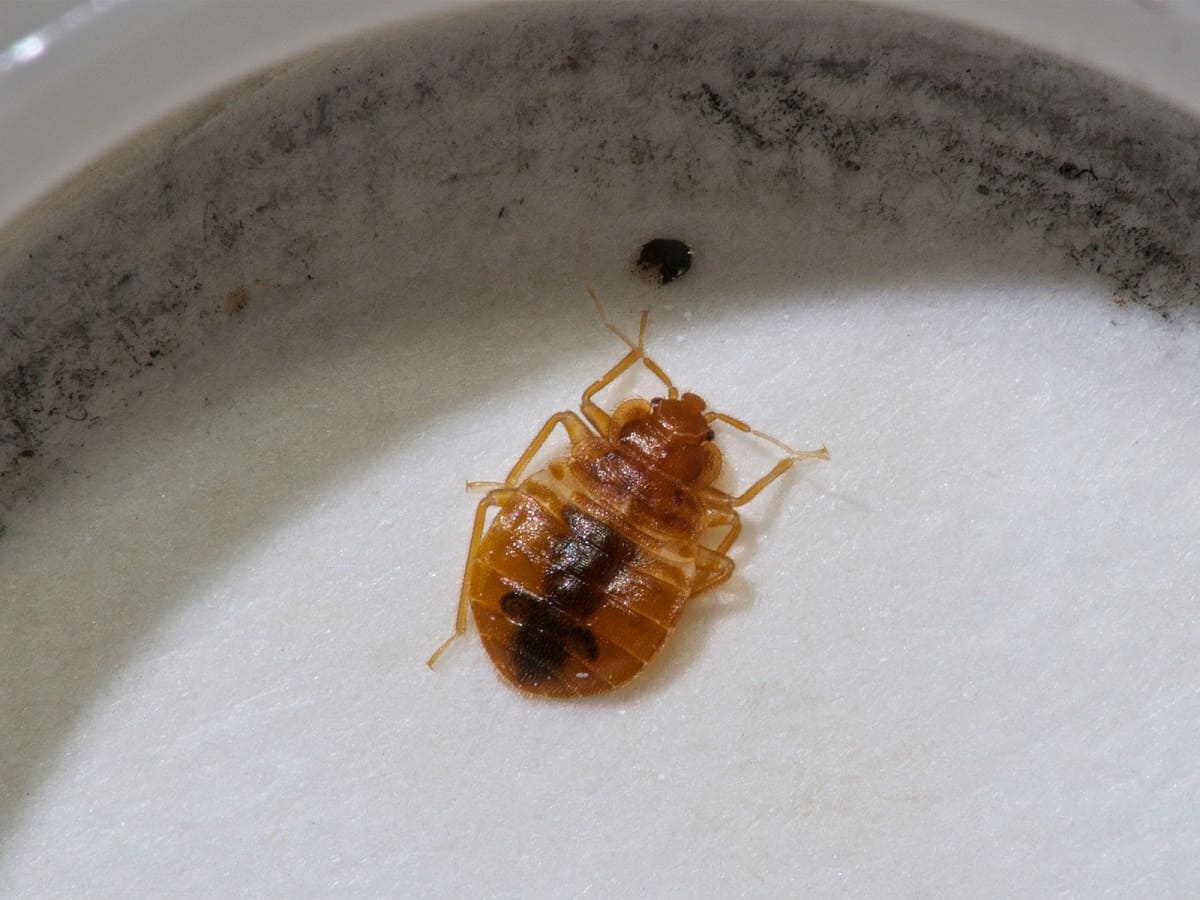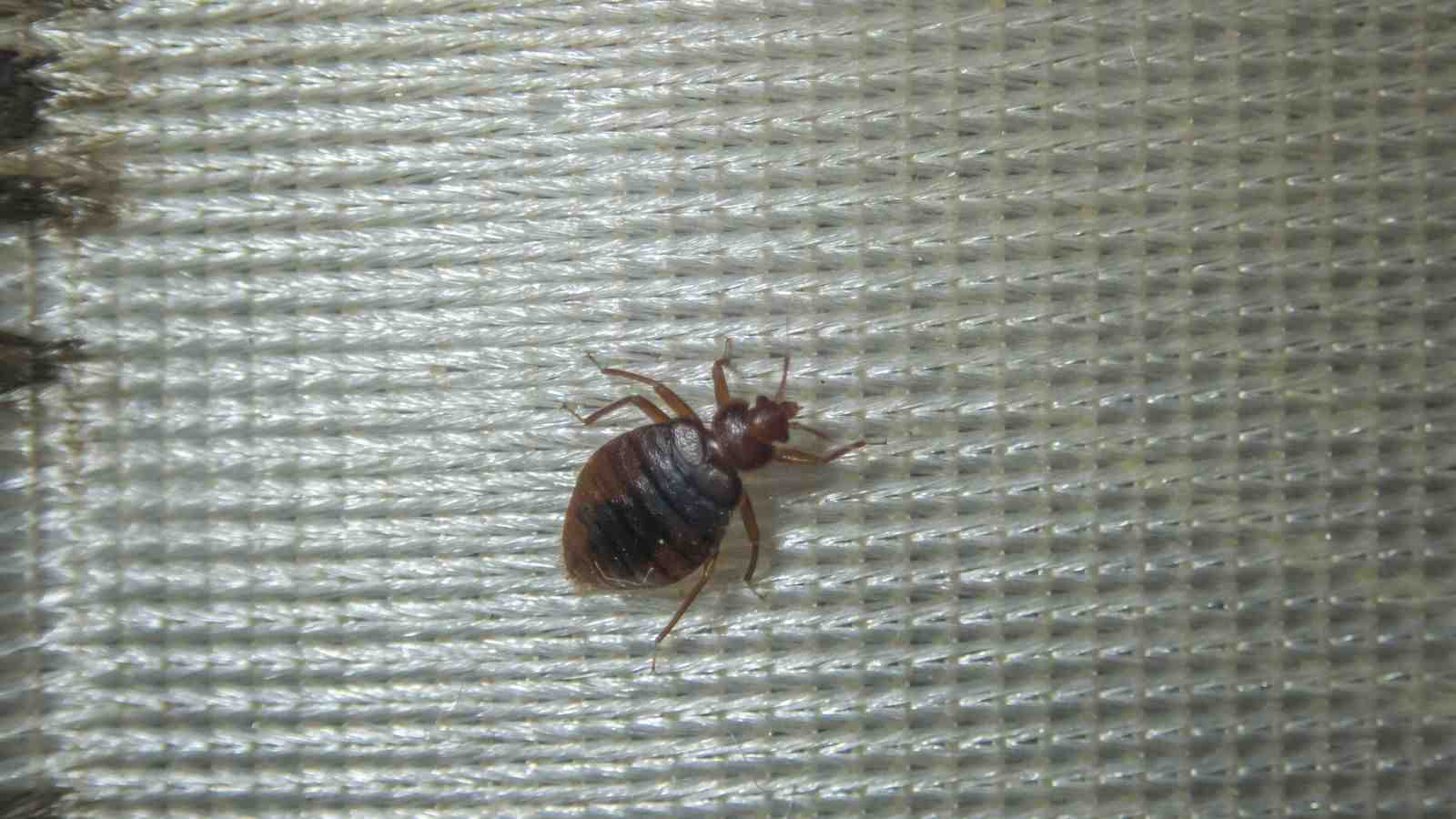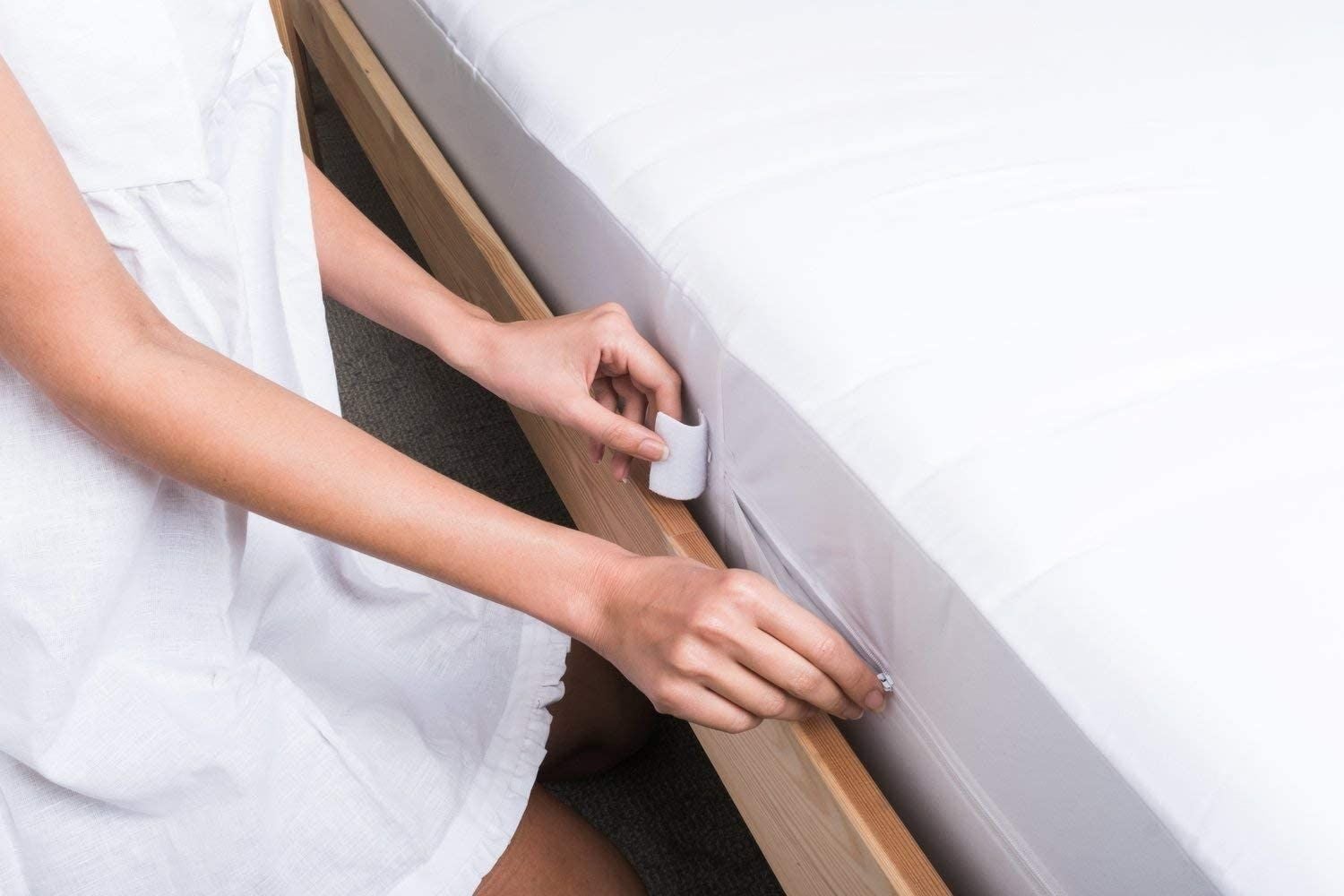Home>Furniture>Bedroom Furniture>How To Look For Bed Bugs On A Mattress
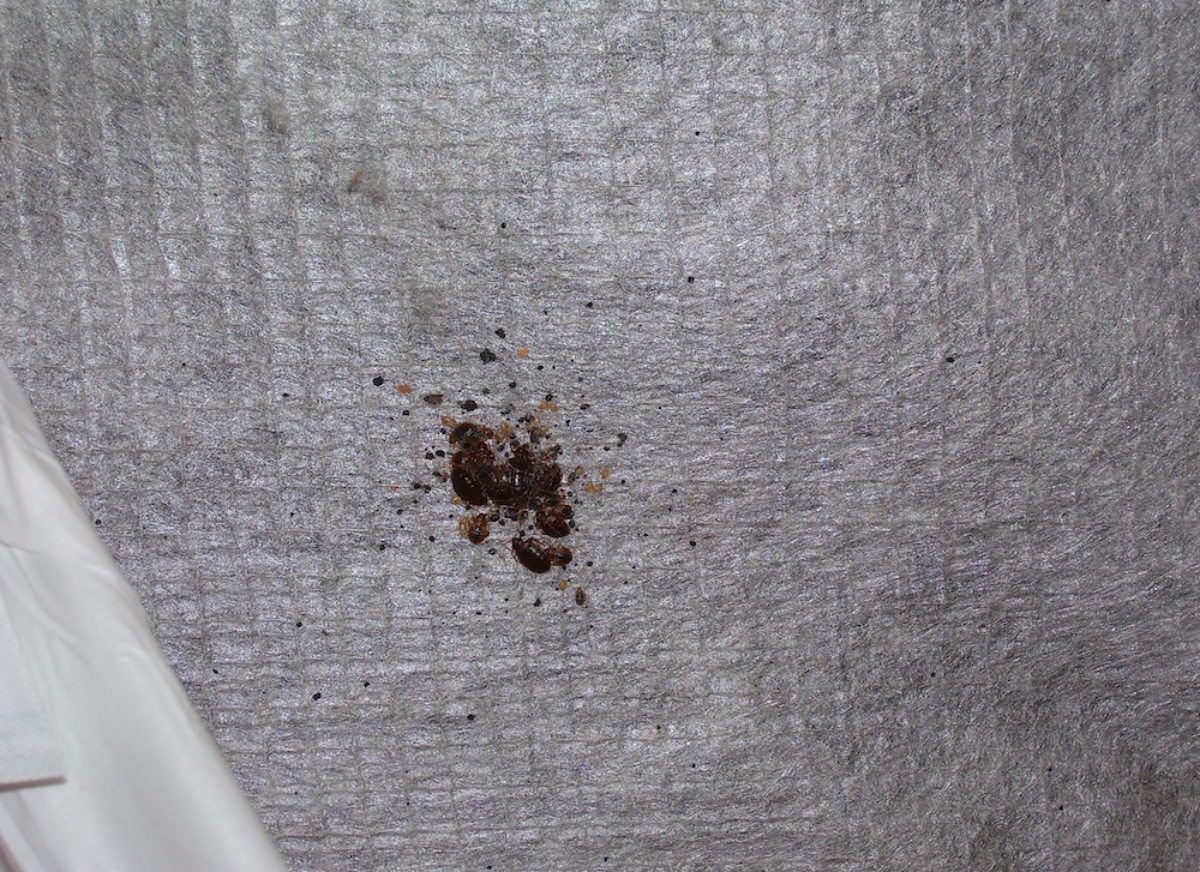

Bedroom Furniture
How To Look For Bed Bugs On A Mattress
Modified: March 19, 2024
Learn how to inspect your mattress for bed bugs with our helpful guide. Keep your bedroom furniture clean and pest-free.
(Many of the links in this article redirect to a specific reviewed product. Your purchase of these products through affiliate links helps to generate commission for Storables.com, at no extra cost. Learn more)
Introduction
Welcome to the ultimate guide on how to look for bed bugs on a mattress. Whether you’re a homeowner, a frequent traveler, or a hospitality professional, knowing how to identify and address a bed bug infestation is crucial. These pesky insects can invade even the cleanest of homes or hotels, causing discomfort and potential health risks. By familiarizing yourself with the signs of bed bugs and learning how to inspect your mattress, you can effectively detect and treat these unwelcome intruders.
Bed bugs are small, flat, and reddish-brown parasitic insects that feed on the blood of humans and animals. They are experts at hiding in tiny cracks and crevices, making them difficult to spot. Their bites can cause itchiness, allergic reactions, and even psychological distress. Early detection is key to preventing a full-blown infestation, so it’s important to regularly check your mattress for any signs of bed bug activity.
In this comprehensive guide, we will explore the various signs of bed bug infestation, provide step-by-step instructions for inspecting your mattress, discuss alternative methods for detecting bed bugs, and offer tips for preventing future infestations. By following these guidelines, you’ll be equipped with the knowledge and tools to take control of your sleep environment and eliminate bed bugs from your bedroom.
Before we delve into the specifics, it’s important to note that bed bug infestations are not a reflection of cleanliness or hygiene. Anyone can encounter these unwanted guests, regardless of how meticulous their cleaning habits may be. Therefore, it’s essential to approach bed bug detection and prevention with a proactive mindset, rather than feeling ashamed or embarrassed.
Now, let’s dive into the fascinating world of bed bugs and how to identify their presence on a mattress.
Key Takeaways:
- Regularly inspect your mattress for signs of bed bugs, such as dark stains, shed exoskeletons, and musty odors, to catch infestations early and take prompt action to address the issue.
- Prevent bed bug infestations by practicing caution when traveling, using mattress encasements, and keeping a clean, clutter-free home to minimize the risk of these unwanted pests invading your sleep environment.
Read more: What Do Bed Bugs On A Mattress Look Like
Understanding Bed Bugs
Before we begin inspecting for bed bugs on a mattress, it’s essential to have a basic understanding of these resilient pests. Bed bugs are small, wingless insects that belong to the Cimicidae family. There are several species of bed bugs, but the most common one is known as Cimex lectularius. They are nocturnal creatures, primarily active at night when humans are asleep.
These tiny insects are notorious for their ability to hitchhike and spread to various locations, making them a global concern. Bed bugs can be found in homes, hotels, dormitories, schools, offices, and even public transportation. Contrary to popular belief, bed bugs do not discriminate based on cleanliness or socioeconomic status. They are attracted to the warmth and carbon dioxide emitted by humans, making our beds an ideal habitat.
Bed bugs are expert hiders and can squeeze into tiny cracks and crevices, such as mattress seams, bed frames, headboards, and furniture. They can also infest upholstery, curtains, and even electrical outlets. These pests reproduce rapidly, with females laying hundreds of eggs in their lifetime. That’s why early detection is crucial to prevent a widespread infestation.
Bed bugs are nocturnal feeders, preferring to bite humans while they’re asleep. Their bites are usually painless at first, and their saliva contains an anesthetic that numbs the skin. Most people don’t realize they’ve been bitten until they develop itchy, red welts. While bed bugs don’t transmit diseases, their bites can cause irritation, itching, and in some cases, allergic reactions.
It’s important to note that bed bugs are resilient and can survive for several months without feeding. They can also withstand a wide range of temperatures, from freezing to hot climates, making them challenging to eliminate. That’s why early detection and proactive measures are essential in dealing with these pests.
Now that we have a better understanding of bed bugs, let’s move on to identifying the signs of infestation on a mattress.
Signs of Bed Bug Infestation
Identifying the signs of a bed bug infestation is crucial for early detection and effective treatment. While bed bugs are adept at hiding, they do leave behind several telltale signs that can indicate their presence. Here are some key signs to look out for when inspecting your mattress:
- Bite marks: Bed bug bites often appear as small, red, itchy welts on the skin. These bites are usually arranged in a line or cluster and may be accompanied by a rash or allergic reaction. However, it’s important to note that not everyone reacts to bed bug bites, so the absence of bites doesn’t necessarily mean you are bed bug-free.
- Dark stains on the mattress: Bed bugs excrete a dark, rusty-colored substance known as fecal matter. This waste leaves behind visible stains on the mattress, typically resembling small black dots. If you notice these stains on your mattress, it could be an indication of bed bug activity.
- Shed exoskeletons: As bed bugs grow and mature, they shed their exoskeletons. These exoskeletons, which are translucent and paper-thin, can often be found near their hiding spots, such as mattress seams, bed frames, or cracks in furniture.
- Musty odor: Bed bugs release a musty, sweet-smelling odor that can be quite distinctive. If you notice an unusual scent in your bedroom, especially near your mattress, it could be a sign of a bed bug infestation.
- Live bed bugs: In severe infestations, you may actually spot live bed bugs on or around your mattress. They are small, oval-shaped insects, ranging in size from 4 to 5 mm long. They are reddish-brown in color and may appear more elongated after feeding.
- Bloodstains: If you find small bloodstains on your sheets or pillowcases, it could be a result of accidentally crushing a bed bug while you were sleeping. Bed bugs feed on blood, and small blood spots can be a sign of their presence.
It’s important to note that while these signs are indicative of a potential bed bug infestation, it’s always best to consult with a professional pest control expert to confirm and address the issue. They have the necessary skills and tools to conduct a thorough inspection and develop an effective treatment plan.
Now that we’ve learned about the signs of bed bug infestation, let’s move on to preparing for a mattress inspection.
Preparing to Inspect the Mattress
Before you start inspecting your mattress for bed bugs, it’s important to take a few preparatory steps. These steps will help ensure a thorough and effective inspection. Here’s what you need to do to prepare:
- Gather the necessary tools: To properly inspect your mattress, you’ll need a few essential tools. These include a flashlight, a magnifying glass, a credit card or thin card, and a vacuum cleaner with a hose attachment. Having these tools handy will make the inspection process easier and more effective.
- Wear protective clothing: It’s important to protect yourself during the inspection to avoid any potential contact with bed bugs. Consider wearing long sleeves, long pants, gloves, and even a face mask if you have any respiratory concerns. This will minimize any risk of exposure to the pests or their droppings.
- Clear the area: Before inspecting your mattress, remove all bedding, including sheets, pillowcases, and mattress covers. Clear the surrounding area as well, ensuring there are no items obstructing your view or access to the mattress. This will provide a clear space to work and make it easier to identify any signs of bed bugs.
- Have a plan for disposal: If you do come across live bed bugs or heavily infested mattresses, it’s important to have a plan for their safe disposal. Bed bugs are resilient and can survive being squished, so it’s best to seal them in a plastic bag and dispose of it in an outdoor trash bin. Be sure to consult local regulations and guidelines for the proper disposal of infested items.
- Keep track of your findings: To aid in the inspection process and maintain a record of any signs of infestation, keep a notebook or use your smartphone to take notes and photos. This will help you track your progress and provide evidence if you need to consult a professional pest control expert later on.
Once you have completed these preparatory steps, you’re ready to move on to the actual inspection of your mattress. In the next section, we’ll provide a step-by-step guide on how to thoroughly inspect your mattress for bed bugs.
Step-by-Step Guide to Inspecting the Mattress
Inspecting your mattress for bed bugs requires a systematic approach to ensure a thorough examination. Follow these step-by-step guidelines to effectively inspect your mattress:
- Start with a visual inspection: Begin by carefully examining the seams, piping, and tags of your mattress. Look for any signs of bed bug activity, such as dark stains, shed exoskeletons, or live bugs. Take your time and pay attention to detail, as these pests can be small and easily missed.
- Use a flashlight and magnifying glass: Bed bugs are experts at hiding in tiny cracks and crevices. Use a flashlight to shine light into every corner of your mattress, illuminating potential hiding spots. A magnifying glass can be useful for getting a closer look at small spots or exoskeletons.
- Check the mattress seams: The seams of your mattress are common hiding places for bed bugs. Carefully inspect the seams, pulling them apart if necessary, to get a better view of any potential bed bug activity. Look for dark stains, shed skins, or live bugs crawling along the seams.
- Examine the tufts and buttons: If your mattress has tufts or buttons, pay extra attention to these areas. Bed bugs may seek refuge in these spots, as they provide additional hiding places. Inspect each tuft and button carefully to ensure there are no signs of bed bug presence.
- Check the box spring and bed frame: Bed bugs can infest not only your mattress but also the box spring and bed frame. Take the time to inspect these areas as well, paying close attention to the seams, corners, and joints. Look for any signs of bed bug activity, such as dark stains or live bugs.
- Vacuum the mattress and surrounding area: After completing your visual inspection, use a vacuum cleaner with a hose attachment to thoroughly vacuum the mattress and the surrounding area. This will help remove any bed bugs, eggs, or droppings that may have been missed during the visual examination.
- Seal and dispose of infested items: If you come across live bed bugs or heavily infested items, it’s important to seal them in a plastic bag immediately. This will prevent the pests from spreading to other areas of your home. Consult local regulations for the proper disposal of infested items.
Remember, the goal of inspecting your mattress is to identify any signs of bed bug activity early on. If you find evidence of an infestation during your inspection, it’s crucial to take immediate action to address the problem. Consult a professional pest control expert for further guidance and treatment options.
Now that you’ve completed the mattress inspection, let’s explore alternative methods for detecting bed bugs.
Use a flashlight to inspect mattress seams, tufts, and folds for live bugs, eggs, or fecal spots. Look for tiny, brownish-red bugs about the size of an apple seed.
Read more: What Do Bed Bugs Look Like In A Mattress
Alternative Methods for Detecting Bed Bugs
In addition to visual inspections, there are alternative methods you can utilize to detect the presence of bed bugs in your home. These methods can be helpful, especially if you suspect an infestation but are unable to find clear visual evidence. Here are a few alternative methods for detecting bed bugs:
- Bed bug monitors: Bed bug monitors are specially designed traps that can help detect the presence of these pests. They are typically placed under the legs of your bed or along the baseboards of your bedroom. These traps use attractive lures or sticky surfaces to capture bed bugs as they move around the area.
- Interceptor traps: Interceptor traps are installed under bed legs, creating a barrier between the floor and the bed. These traps are designed to capture bed bugs as they attempt to climb up onto the bed. Interceptor traps can help determine the severity of an infestation and provide evidence of bed bug activity.
- Bed bug dogs: Specially trained bed bug detection dogs are highly effective in sniffing out these pests. These dogs have a keen sense of smell and can detect bed bug infestations even in hard-to-reach areas. Bed bug detection dogs are often used by professional pest control companies to accurately identify the presence of bed bugs.
- Portable heaters: Bed bugs are susceptible to heat, so using portable heaters can help detect their presence. Raise the temperature in the suspected area to around 120°F (49°C) for several hours. If there are bed bugs present, they will likely become active and move towards cooler areas, making them more visible during your visual inspection.
- Bed bug traps: DIY bed bug traps can be made by placing a dish of soapy water underneath a heat source, such as a night light. The heat and carbon dioxide from the light will attract the bed bugs, causing them to fall into the soapy water and drown. While not as effective as professional traps, they can help provide additional evidence of an infestation.
Using these alternative detection methods can supplement visual inspections and provide additional evidence of a bed bug infestation. However, it’s important to consult with a professional pest control expert for confirmation and appropriate treatment options if you suspect an infestation.
Now, let’s explore the necessary steps to take if bed bugs are found on your mattress.
What to Do if Bed Bugs are Found on the Mattress
Discovering bed bugs on your mattress can be distressing, but it’s crucial to take prompt action to address the issue. Here are the necessary steps to follow if bed bugs are found on your mattress:
- Isolate the infested area: Immediately isolate the infested mattress by covering it with a plastic mattress encasement or a tightly sealed plastic cover. This will help prevent the bed bugs from spreading to other areas of your home.
- Reduce clutter: Clear any clutter, such as clothing or personal items, from around your bed. This will eliminate potential hiding spots for bed bugs, making it easier to detect and treat the infestation.
- Wash and dry bedding: Remove all bedding, including sheets, pillowcases, and mattress covers, and launder them using hot water. Dry them on high heat for at least 30 minutes to kill any bed bugs or eggs that may be present.
- Vacuum the mattress: Use a vacuum cleaner with a hose attachment to thoroughly vacuum your mattress, paying special attention to seams, edges, and corners. Dispose of the vacuum bag in a sealed plastic bag immediately after use to prevent bed bugs from escaping.
- Contact a professional pest control expert: Bed bug infestations can be challenging to eliminate completely on your own. It’s essential to consult a professional pest control expert who specializes in bed bug treatments. They will assess the infestation, recommend appropriate treatment methods, and provide guidance on how to prevent future infestations.
- Follow professional treatment recommendations: Work closely with the pest control expert and follow their recommended treatment plan. This may involve a combination of chemical treatments, heat treatments, and ongoing monitoring to ensure the eradication of bed bugs.
- Monitor and inspect regularly: After treatment, continue to monitor your mattress and surrounding areas for any signs of bed bug activity. Inspect your mattress periodically and take immediate action if you notice any new signs of infestation.
- Take preventive measures: To prevent future bed bug infestations, maintain good hygiene practices, regularly vacuum your home, and inspect any used furniture or bedding before bringing them into your home. Consider using mattress encasements as a preventive measure to protect your mattress from future infestations.
Remember, successfully eliminating a bed bug infestation requires a combination of professional intervention and ongoing vigilance. By taking swift action and following the guidance of a pest control expert, you can effectively rid your mattress of bed bugs and create a safe and comfortable sleep environment.
Now, let’s explore some tips for preventing bed bug infestations in the first place.
Tips for Preventing Bed Bug Infestations
Preventing a bed bug infestation is always better than dealing with one. By following these simple yet effective tips, you can minimize the risk of bed bugs entering your home and spreading to your mattress:
- Inspect used furniture and bedding: Before bringing in any used furniture or bedding into your home, thoroughly inspect them for any signs of bed bugs. Check seams, crevices, and corners for dark stains, shed exoskeletons, or live bugs.
- Be cautious when traveling: Bed bugs are notorious hitchhikers and often infest hotels and other accommodations. When traveling, be cautious and inspect your luggage, clothing, and personal items before bringing them back into your home. Consider using luggage encasements to keep bed bugs from hitching a ride.
- Store belongings properly: When storing clothing or belongings that are not regularly used, make sure to store them in sealed plastic bags or containers. This will help prevent bed bugs from infesting your stored items.
- Keep a clean and clutter-free home: Bed bugs thrive in cluttered environments where they have more hiding spots. Keep your home clean and clutter-free, making it harder for bed bugs to find hiding places.
- Use mattress encasements: Invest in high-quality mattress encasements that are specifically designed to protect against bed bugs. These encasements create a barrier that prevents bed bugs from infesting your mattress.
- Vacuum regularly: Regularly vacuum your mattress, bed frame, and surrounding areas to remove any potential hiding spots for bed bugs. Empty and dispose of the vacuum bag in a sealed plastic bag immediately afterward.
- Be cautious with secondhand items: If you decide to bring home secondhand items, such as clothing or furniture, it’s important to inspect them thoroughly. Consider washing or treating them before introducing them into your living space.
- Educate yourself: Stay informed about bed bug prevention and detection methods. Knowing how to identify bed bugs and early signs of infestation can help you take immediate action.
- Consult professionals: If you suspect bed bugs or require assistance, don’t hesitate to consult a professional pest control expert. They have the knowledge and expertise to accurately assess, treat, and prevent bed bug infestations.
By implementing these preventive measures, you can significantly reduce the risk of bed bug infestations and protect your mattress from these unwanted invaders.
Now, let’s conclude our comprehensive guide on how to look for bed bugs on a mattress.
Conclusion
Bed bugs can infest any home or hotel, causing discomfort and distress. Knowing how to detect and address a bed bug infestation is essential for maintaining a clean and healthy sleep environment. By following the steps outlined in this guide, you can effectively inspect your mattress for bed bugs and take appropriate action if an infestation is detected.
Understanding the signs of bed bug infestations, such as bite marks, dark stains, shed exoskeletons, and musty odor, is vital for early detection. By regularly inspecting your mattress and being vigilant for any signs of bed bug activity, you can address the issue before it becomes widespread.
In addition to visual inspections, we explored alternative methods for detecting bed bugs, such as using bed bug monitors, interceptor traps, bed bug dogs, portable heaters, and DIY traps. These methods can provide additional evidence and aid in confirming the presence of bed bugs.
If you find bed bugs on your mattress, it’s crucial to take prompt action. Isolate the infested area, wash and dry bedding on high heat, vacuum the mattress and surrounding areas, and consult a professional pest control expert for effective treatment options. Following their guidance will help ensure the complete elimination of bed bugs.
Preventing bed bug infestations is key to maintaining a bed bug-free environment. By inspecting used furniture and bedding, practicing caution when traveling, keeping a clean and clutter-free home, using mattress encasements, and regularly vacuuming, you can minimize the risk of bed bugs entering your home.
Remember, the battle against bed bugs is ongoing, and vigilance is key. By staying informed, employing preventive measures, and seeking professional assistance when needed, you can protect your mattress and prevent the unwanted presence of bed bugs in your home.
We hope this comprehensive guide has empowered you with the knowledge to effectively look for bed bugs on a mattress and take necessary steps to address any infestations. Here’s to a peaceful and bed bug-free sleep environment!
Frequently Asked Questions about How To Look For Bed Bugs On A Mattress
Was this page helpful?
At Storables.com, we guarantee accurate and reliable information. Our content, validated by Expert Board Contributors, is crafted following stringent Editorial Policies. We're committed to providing you with well-researched, expert-backed insights for all your informational needs.
